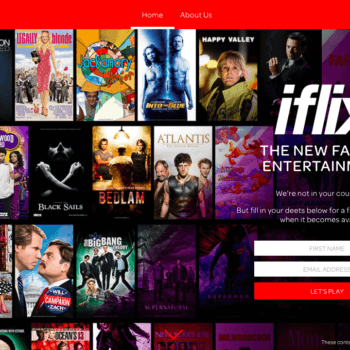Most business people are used to thinking of strategy as a way to generate money, but not so much as a way to create societal impact.
Without good strategy, your social mission will likely fall flat on its face. It might still make you lookgood, but you’ll be wasting resources – and more importantly – you’ll be throwing away an opportunity to use your company’s resources in a way that makes the world a better place.
What’s more, without a strategy to integrate them, your efforts to create social impact will be disconnected from your revenue generating activities – and that will make them unsustainable over time.
Impact Strategy is Tough
Building strategy for social impact is difficult.
Social impact strategy is also an area where the business sector could learn a lot from the nonprofit sector. Sure, social impact is the reason nonprofits exist so it’s natural that they’d be ahead on this front. But what many of us who come from a business background may not realize is that there is an actual discipline of social impact strategy, similar in intellectual rigor to what you might find in the field of business strategy.
Social impact strategy has its own vibrant field of consultants who specialize in helping nonprofit organizations plan and assess their social impact. The field itself is typically referred to as “outcomes evaluation” and it’s been largely driven by philanthropists looking for better feedback on their social investments.
Outcomes evaluation techniques can also be used for strategic planning, though in my experience, far fewer nonprofits use them that way. Over the course of my last job as the head of a mission-driven technology consulting shop, I was lucky enough to work with a top-notch evaluation consultant in integrating social impact evaluation techniques into our strategic planning process. The resulting “Theory of Change” was a powerful asset for our organizational strategy, and it was some of the most rigorous thinking I’ve ever done as an organizational leader.
Based on that experience, here are just a few of the reasons I found it so tough:
- Fuzziness: Meaningful social impact metrics can be difficult to identify; some of the most important societal outcomes are inherently qualitative in nature.
- Interdependence: Change rarely happens in society as a result of just one factor and proving causation is tough; so isolating your company’s exact contribution can be expensive and time-consuming, if not impossible.
- Multiple scales: Impact happens on many levels, from the more immediate and concrete direct effects of your work to the more diffuse and much larger downstream effects; working at multiple scales is critical, but can be disorienting.
Why Invest in a Social Impact Strategy?
OK, so developing strategies for social impact is difficult. In a future post, we’ll look at what some of the tools for developing that strategy look like, but before that, let’s try to understand why someone like you, someone who’s busy trying to grow a company, would want to take the time and effort:
Actual Impact:
This one goes without saying, but I’ll say it anyway. If your Corporate Social Responsibility (CSR) initiatives are mostly for show and their real-world impact isn’t a driving concern, you can stop right here. Developing social impact strategies won’t be a great investment of your firm’s resources. But if you really are trying to move the dial on some societal issue, social impact strategies will help you be smart about where to invest and how to test your assumptions along the way, so that you can make adjustments as needed over time – just as you would with your other business metrics.
Revenue Synergy:
You are not a nonprofit organization. You care about social objectives, but you depend on revenues. Social impact strategies are sustainable over time only when they mesh with your revenue strategies. One of the most powerful ways to do this is to build products and services that create positive social impact as they are made and used by your stakeholders. Do that and you sync your social mission with your customer mission in ways that build tremendous long-term value for your business.
Engaging Partnerships:
Thinking in impact terms helps you identify business partnerships that you might otherwise miss. When a drill manufacturer cares about its customers’ success in hanging a shelf, the customers’ drilling ability becomes just as important as the quality of the drill they make. Impact strategies highlight these dependencies in ways that help you find powerful partnerships with networks of people who have a stake in your success.
Deep Branding:
When you take the time to deeply understand your desired impact, it becomes much easier to articulate your underlying purpose to customers and other critical stakeholders. Meaning is a powerful draw and a potent stimulus for engagement. The world’s most valuable brands are those that tap this deeper desire for meaning. Impact strategy is a very effective tool for unearthing the essential purpose that pulses deep within your business.
Investing Profits:
No matter how much synergy you create between your revenue and societal goals, real social impact is rarely free. It’s an investment back into the networks of people and into the ecological systems on which your business depends. As a mission-driven business, one of your biggest challenges, is determining how much of your profit can be sustainably plowed back into your stakeholders. Invest too much and cash reserves dry up. Invest too little and stakeholders dry up. So a big part of your impact strategy is aligning it with your business model.
Next Steps
Social impact strategies are definitely not for every company. They are difficult and require real investments of your company’s time and resources. And while there are many rational reasons for investing in social impact, in the end, that’s not why business leaders like you do it. No, that motivation comes from someplace deeper and it’s a huge attractor for others who share your values.





























